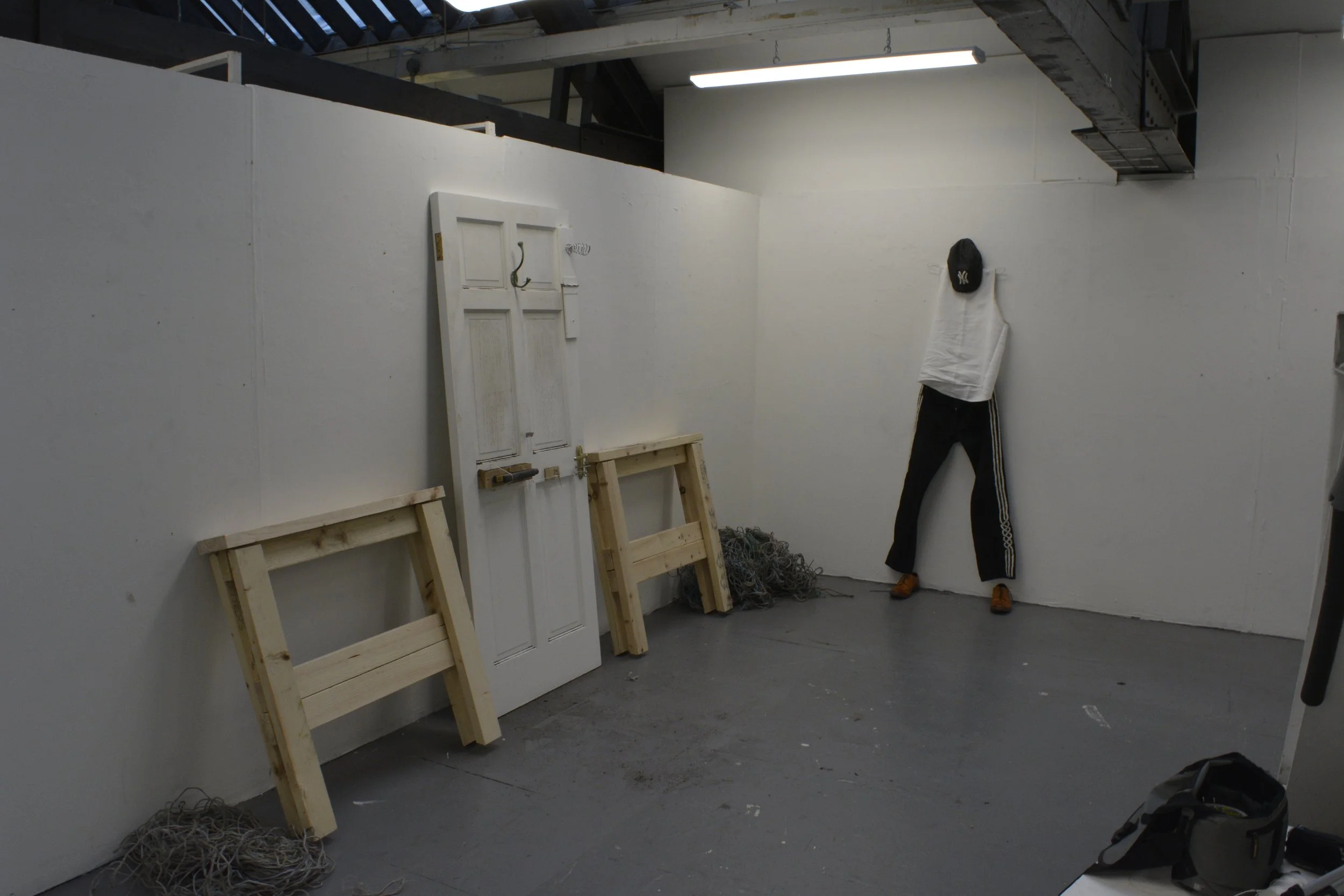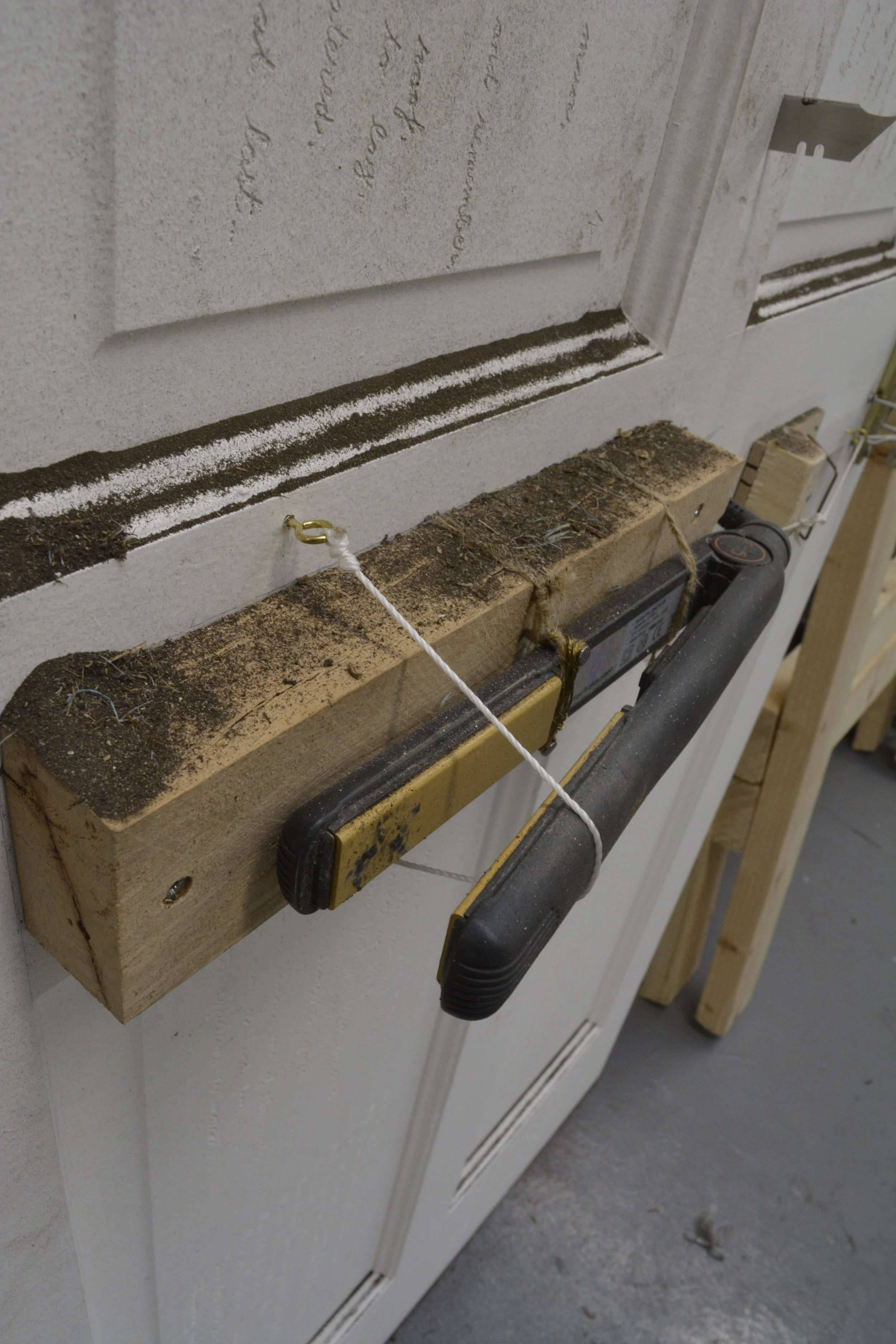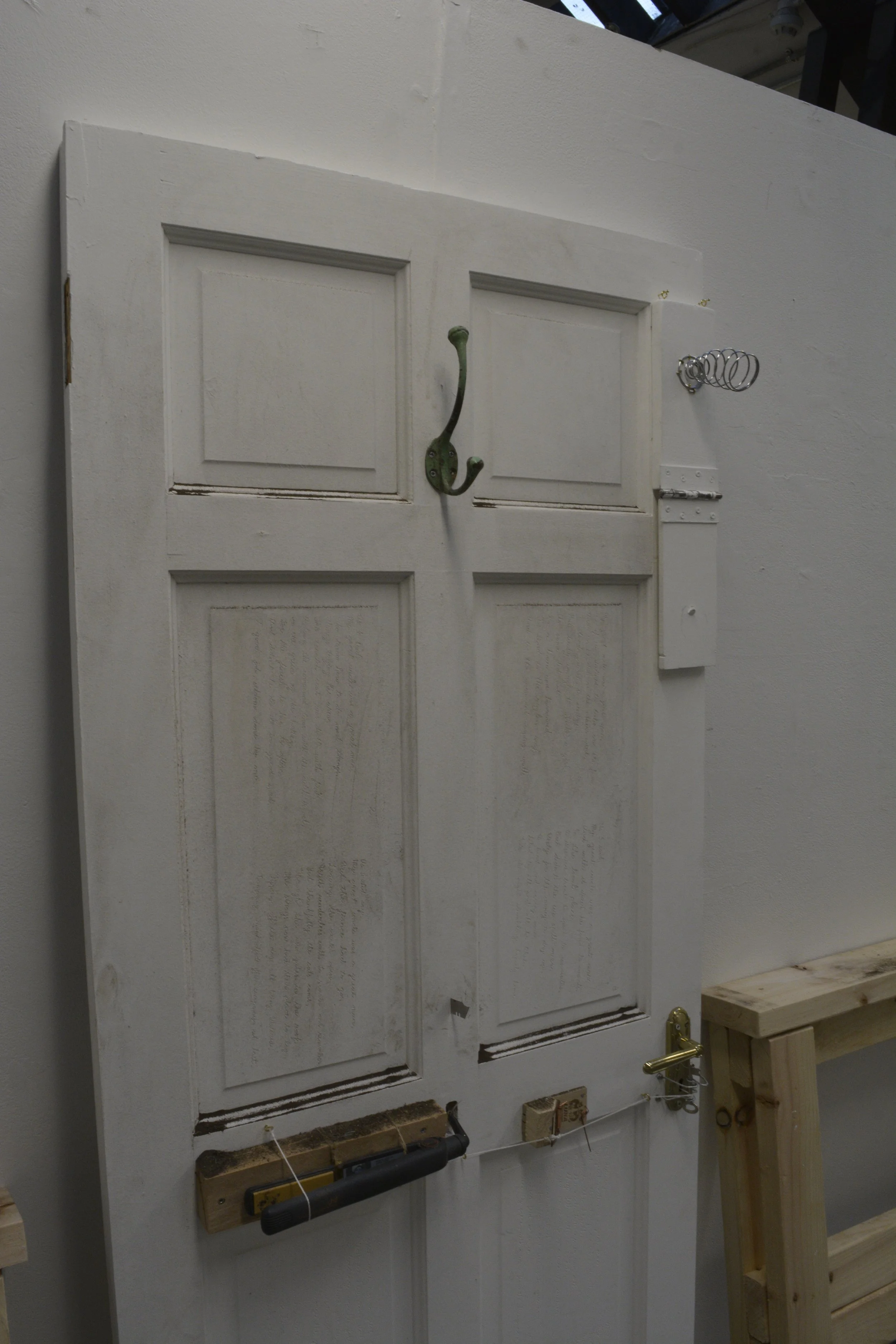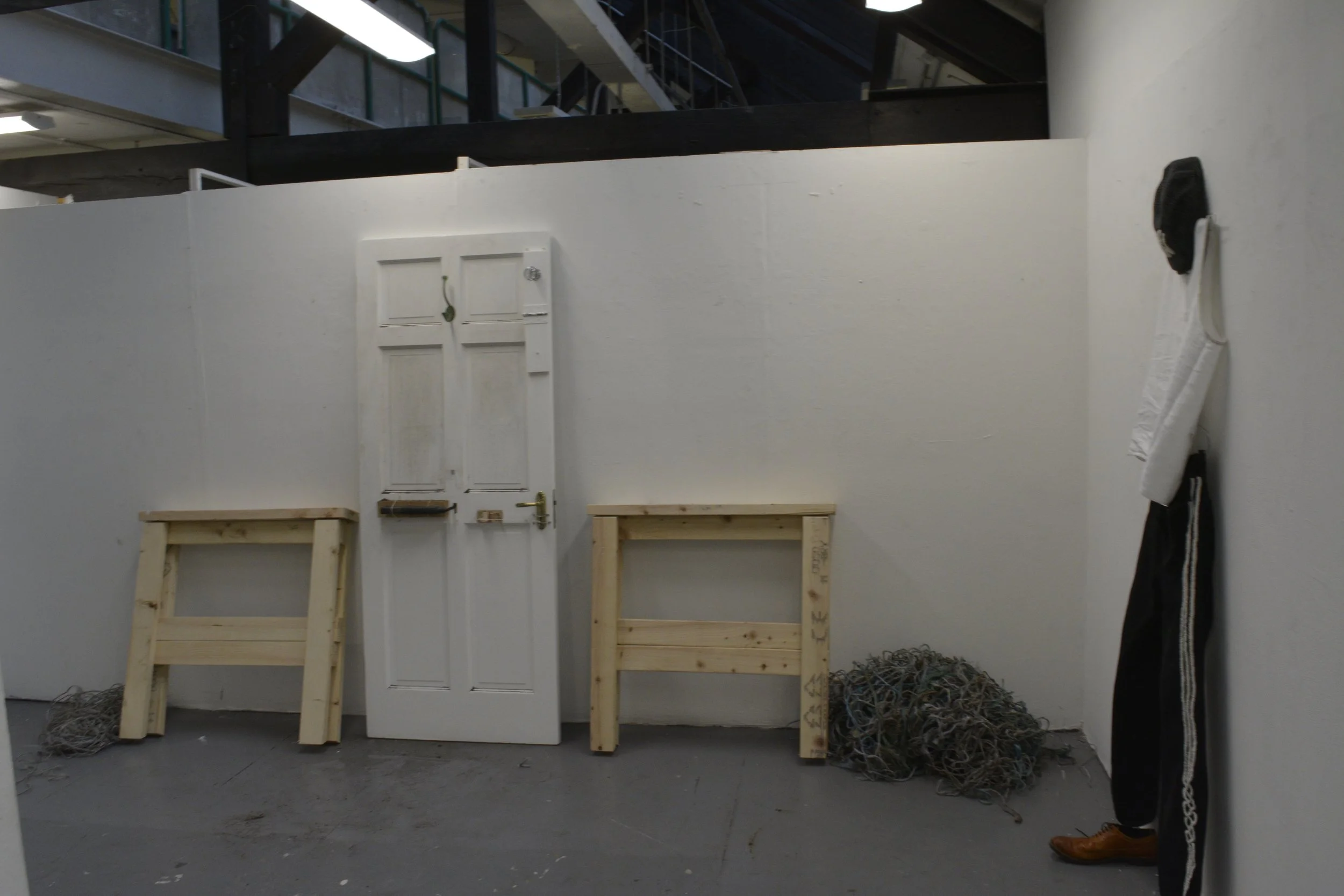Twine for the Feed
Twine for the Feed is a performance activated sculpture which tales of the Irish Bachelor and the conditions of isolated living in the west coast of Ireland.
A sculpture consisting of a wooden door fashioned into a welding machine is utilized as a tool of reflection and requiem, as the artist recites a poem of his late great uncle.
This piece was inspired by the material collected during the renovation of the uncles barn, where the only materials predominantly left intact were bottles of whiskey and bailing twine buried beneath shovel-fulls on decay and manure.
“The title, Twine for the Feed, is inspired by a book I picked up in a local charity shop called, Leaves for the Burning, by Mervyn Wall. It follows a group of middle-aged, disenchanted bachelors who drown their sorrows in alcohol to escape their miserable lives. The group then embark on a mission to Sligo to attend W.B. Yeats’ funeral, restoring a sense of purpose and adventure back into their lives. I chose it because the characters match the subject well, and they’re destination leads to Sligo, specifically Drumcliff, where Yeats is buried, which also happoens to be where my uncle is too.”
The work consists of a door splayed across two saw horses, two piles of twine, a hair-straightener, an “Irish workman uniform,” a mousetrap, a razor blade, a key, string, and some hardware (to put it bluntly).
Atop the door you see an inscription, which is a poem authored by the artist to act as posterity to the viewer once the piece is deactivated. The poem laments of the great uncle’s tale, leading all the way to its end.
Twine is used as a metaphor of repair and memory, where the artist pieces history back together with each thread, and utilizing a seemingly worthless material.
“So I was having these ideas about my uncle and the kind of man he was and thought of his handiness. He was a man of few resources, but his ingenuity was always something I admired. That seems to be a common trait of farmers here in Ireland, they use what they have and they make it work.”
“The obvious artefact I could have used was the pile of bottles I found while digging through the peat and muck in the cow shed, but the twine had a better message to carry.”
“I started investigating more vernacular ways of life; craft, woodworking, textiles; and realised I had to invent my own version of a foot pedal spinning wheel in order to produce my own version of yarn.”
“I looked toward materials that matched both himself and the reconstruction that was taking place in his old home. An old door would often be used across to saw horses as a workbench, a door is a symbol of passage; coming and going; of home, domesticity.”
“The key is held suspended over the lock, twisting and turning, jingling as the device is active. A mouse trap acts as a mechanical element, and the foot pedal is reminiscent of a bed spring. A Stanley razor blade juts from the door to act as a cutting device. The perfect twine welding machine.”
The Irish workmans uniform hanging up is a piece of globalised garment, which can be explored further here.




